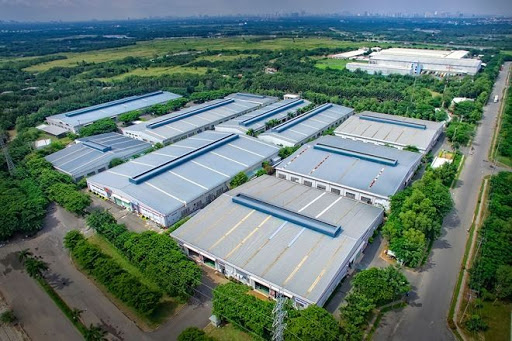 Economy
Economy


|
| The development of industrial zones needs a comprehensive plan to capture the transition of the foreign direct investment inflow. – Photo baochinhphu.vn |
HÀ NỘI – The development of industrial zones (IZs) needs a comprehensive plan to capture the transition of the foreign direct investment (FDI) inflow spurred by trade wars and the COVID-19 pandemic in which Việt Nam has significant opportunities to become the next global factory.
The global production transition out of China spurred by the US – China trade wars and the COVID-19 pandemic recently gave a push to the development of IZs in Việt Nam.
In the first three months of this year, five new IZs were founded with a total area of 800 hectares, compared with only four in the whole of 2019.
Some deserted IZs found new developers and had infrastructure developed to get ready for leasing, such as the 46-hectare An Phát High Tech Industrial Park in the northern province of Hải Dương.
Sử Ngọc Khương, senior director of investment, Savills Việt Nam, said that a lot of domestic and foreign investors were finding locations in industrial zones for investment, some wanted to become developers of industrial parks while some others planned to expand factories.
Đỗ Nhất Hoàng, Director of the Ministry of Planning and Investment’s Foreign Investment Agency, said that a close watch was being kept on the transition of global production, which was opening opportunities for a number of countries, including Việt Nam.
Hoàng said that the agency was working with foreign investors who were considering moving to Việt Nam so as to raise policies which would create a favourable investment climate.
He added that the Law on Investment was being amended to enable Việt Nam to capture the FDI inflow in the context of the global production transition.
The ministry said that the development of IZs needed a strategy which aimed at sustainability, economic efficiency and environmental friendliness.
According to Nguyễn Văn Toàn, Deputy President of Việt Nam’s Association of Foreign Invested Enterprises, the infrastructure of IZs remained a limitation. Toàn said that many IZs did not have good transport connectivity.
“A comprehensive plan is needed for the development of IZs,” Toàn said, adding that the plan would prevent rampant development of IZs nationwide and enable Việt Nam to capture the opportunities from the global production transition.
Việt Nam targeted that the total registered capital into IZs would reach VNĐ2.7-3.2 quadrillion (US$116-138 billion) in domestic investment and $280-330 billion in FDI by 2030. Realised capital was expected at VNĐ1.5 -2 quadrillion and $240-290 billion, respectively, according to the ministry.
In addition, IZs would generate jobs for 5-6 million workers in 2025 and 7-8 million in 2030.
The promulgation of the Law on Foreign Investment in 1987 created conditions for the formation and development of IZs which had so far contributed significantly to attracting the FDI flow into the country.
Statistics of the Ministry of Planning and Investment showed that as of March, 335 IZs were founded with a total area of 97,800 hectares, 206 of which were operational with a total area of 68,700 hectares. The average occupancy rate was 75.6 per cent. – VNS




